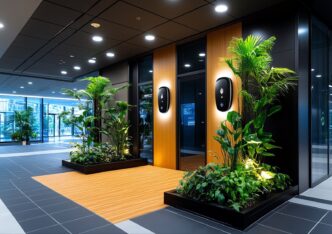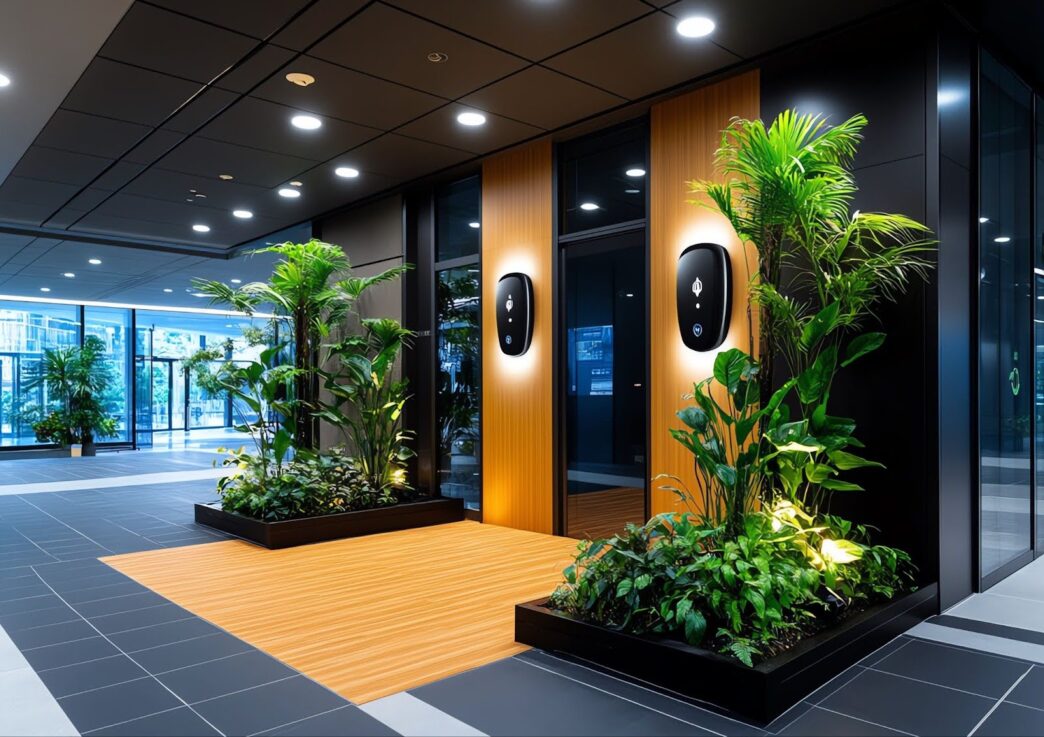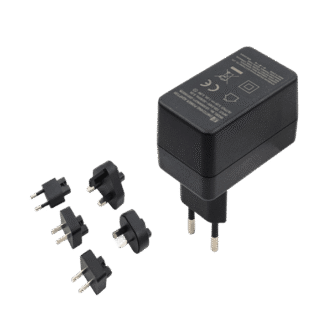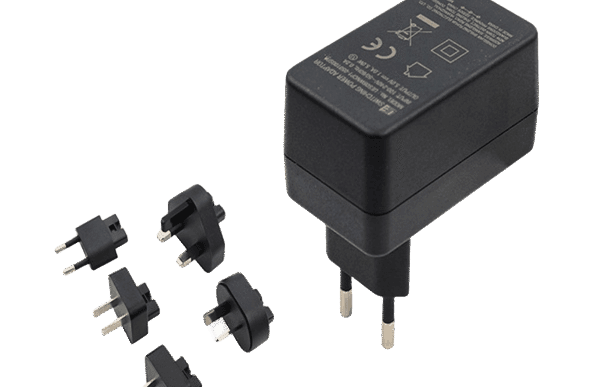In the quest for sustainable development, green buildings have emerged as a cornerstone, integrating advanced technologies to minimize environmental impact while enhancing occupant comfort.
A pivotal innovation in this realm is the adoption of motion sensor switches, which significantly contribute to energy conservation and optimized building performance. The article “How Motion Sensor Switches Drive Energy Efficiency in Green Buildings” delves into the transformative role of these intelligent devices in promoting sustainability.
The Imperative for Energy Efficiency
Buildings are responsible for nearly 40% of global energy consumption, with lighting constituting a substantial portion of this usage. Traditional lighting systems often lead to energy wastage due to human oversight, such as neglecting to turn off lights when not needed.
As energy demands escalate, implementing solutions to curtail unnecessary consumption becomes critical. Motion sensor switches have emerged as an effective strategy to address this challenge. According to the U.S. Department of Energy, integrating motion sensors into lighting systems can reduce energy consumption by up to 30%.
Companies like Select Controls Inc. have developed motion sensor switches that automatically adjust lighting based on occupancy and ambient light levels, thereby maximizing efficiency.
Mechanics of Motion Sensor Switches
Motion sensor switches operate by employing advanced technologies—such as passive infrared (PIR) sensors, ultrasonic sensors, or a combination of both—to detect movement within a space.
Upon sensing occupancy, the system activates the lighting; conversely, if no motion is detected within a predetermined timeframe, the lights are automatically turned off, ensuring energy is not wasted. This straightforward mechanism has a profound impact on reducing energy usage across various settings.
Technological Foundations of Motion Detection
- Passive Infrared Sensors (PIR): These sensors detect heat emitted by living beings within a specific range, making them ideal for small, enclosed areas like offices or restrooms.
- Ultrasonic Sensors: By emitting sound waves and analyzing their reflections, ultrasonic sensors can detect motion, even in larger spaces with potential obstructions.
- Dual-Technology Sensors: Combining PIR and ultrasonic technologies, these sensors enhance accuracy and minimize false triggers, making them versatile for diverse applications.
The evolution of these technologies has significantly improved their reliability and adaptability, catering to the dynamic needs of modern building designs.
Advantages of Automated Lighting in Sustainable Architecture
- Reduction in Energy Consumption: Lighting accounts for approximately 17% of electricity usage in residential and commercial buildings. Implementing automated lighting controls can markedly decrease unnecessary energy use, leading to lower utility expenses and a reduced carbon footprint. In expansive facilities, the cumulative effect of such energy-efficient measures is particularly substantial.
- Operational Efficiency Enhancement: Green buildings prioritize systems that require minimal manual intervention. Automated lighting aligns with this objective by streamlining management processes, reducing maintenance needs, and extending system longevity. Integration with smart building systems facilitates centralized monitoring and control, further boosting operational efficiency.
- Improved Occupant Comfort: Beyond energy savings, these systems enhance user convenience by ensuring spaces are well-lit upon entry without manual input. This feature is especially beneficial in areas like restrooms, corridors, and storage rooms, where lights might otherwise be inadvertently left on.
Expanded Applications and Use Cases
Motion sensor switches are versatile and can be seamlessly integrated into various aspects of green building design:
- Office Environments: Incorporating motion sensor switches in office spaces ensures that lighting is provided only when areas are occupied, promoting energy efficiency without compromising employee comfort. For instance, in meeting rooms and individual offices, lights can automatically turn off after a period of inactivity, reducing energy waste. This approach not only conserves energy but also extends the lifespan of lighting fixtures, leading to cost savings on replacements and maintenance.
- Educational Facilities: Classrooms and lecture halls benefit from motion-activated lighting by ensuring that lights are on during occupancy and off when spaces are vacant. This practice fosters an environment conducive to learning while optimizing energy usage. Additionally, in areas like libraries and study rooms, where occupancy patterns can be unpredictable, motion sensor switches adapt to real-time usage, providing illumination as needed and conserving energy during downtimes.
- Healthcare Settings: Hospitals and clinics can utilize motion sensor switches to maintain hygiene standards by reducing the need for physical contact with switches. In patient rooms and examination areas, lights can automatically adjust based on occupancy, enhancing patient comfort and operational efficiency. Moreover, in critical areas such as operating rooms, integrating motion sensors ensures that lights are promptly activated when medical staff enter, supporting swift and efficient medical responses.
- Hospitality Industry: Hotels can enhance guest experience and conserve energy by installing motion sensor switches in guest rooms and common areas. Lights can automatically illuminate upon guest entry and dim or turn off when spaces are unoccupied, balancing comfort with sustainability. In corridors and lobbies, motion-activated lighting contributes to a welcoming ambiance while optimizing energy consumption during periods of low activity.
- Residential Complexes: In multi-unit residential buildings, motion sensor switches in common areas like hallways, stairwells, and laundry rooms ensure that lights are used only when necessary, reducing communal energy costs. For individual units, integrating motion sensors in areas such as walk-in closets and bathrooms prevents lights from being left on inadvertently, promoting energy-conscious living habits among residents.
- Industrial Facilities: Warehouses and manufacturing plants with varying occupancy patterns can benefit from motion-activated lighting to ensure safety and efficiency. In storage areas and loading docks, lights can activate upon detecting movement, providing necessary illumination for workers and then turning off to conserve energy when areas are unoccupied. This approach not only reduces energy costs but also enhances workplace safety by ensuring adequate lighting during operations.
- Retail Spaces: Shops and malls can employ motion sensor switches to manage lighting in fitting rooms, restrooms, and low-traffic areas, ensuring lights are on only when customers are present. This strategy not only conserves energy but also enhances customer experience by ensuring well-lit spaces when needed while avoiding unnecessary illumination in unoccupied areas. Retailers can further integrate motion sensor lighting with digital displays and signage, activating them when customers approach to create a dynamic shopping experience without excessive energy consumption.
Future of Motion Sensor Technology in Green Buildings
As green building standards continue to evolve, motion sensor switches are expected to become an integral component of smart and sustainable infrastructure. Advances in artificial intelligence (AI) and the Internet of Things (IoT) are further enhancing the capabilities of these systems.
AI-powered motion sensors can analyze occupancy patterns and adjust lighting dynamically based on real-time data, optimizing energy efficiency while accommodating the unique needs of each space.
Additionally, integration with building automation systems (BAS) allows motion sensors to interact with other energy-saving mechanisms, such as HVAC controls, window shading, and smart thermostats. This interconnected approach ensures a holistic strategy for energy conservation, maximizing efficiency while maintaining indoor environmental quality.
Industry leaders and building designers are increasingly incorporating motion sensor technology into both new constructions and retrofit projects, recognizing its potential to reduce carbon footprints and operational costs. Government incentives and regulatory requirements are also encouraging wider adoption, further driving the market for intelligent lighting solutions.
The Growing Importance of Motion Sensor Switches in Global Sustainability Initiatives
Global efforts to combat climate change and reduce energy waste have positioned motion sensor switches as a key player in sustainability initiatives. Organizations aiming for LEED (Leadership in Energy and Environmental Design) or BREEAM (Building Research Establishment Environmental Assessment Method) certification are actively implementing automated lighting systems as part of their energy-saving strategies.
Governments worldwide are also emphasizing energy efficiency by enacting policies that encourage or mandate the use of smart lighting technologies. For example, the European Union’s Energy Performance of Buildings Directive (EPBD) and various U.S. state-level energy codes promote the adoption of motion sensor-based lighting controls to achieve higher energy performance standards.
Embracing Innovation for a Sustainable Future
Motion sensor switches represent a transformative step toward energy-efficient, smart buildings. By significantly reducing energy consumption, enhancing operational efficiency, and improving occupant comfort, these advanced lighting solutions align with the objectives of modern green building initiatives.
As the demand for sustainable infrastructure grows, the integration of motion sensor technology will continue to expand, shaping the future of energy-conscious building design. Developers, facility managers, and policymakers must embrace these innovations to create smarter, more efficient spaces that contribute to a greener planet.














